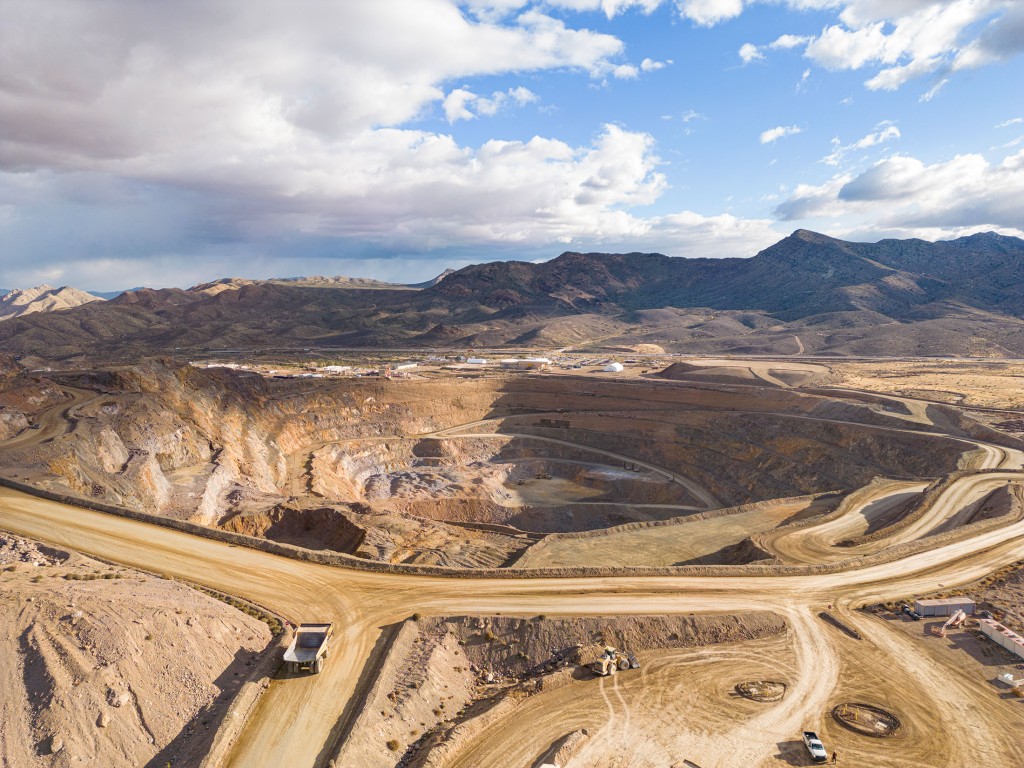
Mono Lake, located in California’s Eastern Sierra region, is one of the most unique lakes in the world due to its extremely high salinity and high levels of arsenic. What’s even more astonishing is the ecosystem of bacteria that inhabit the lake, which have adapted to use arsenic instead of oxygen for photosynthesis. They are truly alien life forms. Well, not really. But they are weird.
Mono Lake was formed at least 760,000 years ago, making it one of the oldest lakes in North America. Mono Lake has an average depth of about 57 feet (17 meters) and a maximum depth of around 159 feet (48 meters), though the water level fluctuates due to evaporation and water diversions.
The region surrounding Mono Lake is geologically active, with extensive volcanic activity linked to the Mono–Inyo Craters. The most recent eruption, which took place 350 years ago, led to the creation of Paoha Island. Panum Crater, located on the lake’s southern shore, exemplifies a combination of a rhyolite dome and a cinder cone. Nearby is the Long Valley Caldera, one of the largest calderas in the world.

Mono Lake is what geologists refer to as an endorheic basin, or a closed lake, meaning that water flows into the lake, but the lake has no outflow. Water can only leave the lake through evaporation or by seeping into the ground, which often leads to the lake becoming quite salty. By analyzing carbon and oxygen isotopes, scientists have uncovered fascinating links between historical Mono Lake levels and significant climate changes.
The Unique Ecosystem
Mono Lake is home to a diverse ecosystem of organisms that have adapted to its extreme conditions, including bacteria that can survive and even thrive on arsenic. These organisms were not well understood until the 20th century, and even now scientists are trying to fully understand how they do what they do. Almost all other life on earth uses oxygen to make energy. Somehow, these organisms have found another way.
Arsenic is a toxic element that is typically found in low concentrations in nature. However, due to a geology of high volcanic and geothermal activity, as well as a history of evaporation and replenishment, Mono Lake contains high levels of naturally occurring arsenic, making it an ideal environment for unusual bacteria that have evolved to use arsenic as a source of energy.
These bacteria are part of a group called extremophiles, which are organisms that can survive in extreme environments that would be fatal to most other life forms. The bacteria in Mono Lake are specifically known as arsenic-metabolizing bacteria, which means that they are able to convert arsenic into a form that they can use for energy.
The process of arsenic metabolism is complex and involves a number of different enzymes and biochemical pathways. Essentially, the bacteria are able to use arsenic instead of oxygen to produce energy through a process called anaerobic respiration, by which bacteria are able to use electron acceptors other than oxygen. This means that they are able to survive in environments where oxygen is limited or absent, such as the deep, oxygen-deprived waters of Mono Lake.
The ability of bacteria to metabolize arsenic is unique and has been the subject of much scientific research. Likely, this ability evolved through natural selection as a result of the high levels of arsenic in Mono Lake, as the bacteria that were able to use this toxic element as a source of energy had a survival advantage over those that could not.

Despite the unusual nature of arsenic metabolism, these bacteria are not the only organisms that have evolved to survive in extreme environments. Extremophiles have been found in a variety of environments, including deep-sea hydrothermal vents, Antarctic ice, and even inside nuclear reactors. (I know, crazy, right).

Purchase stunning art prints of iconic California scenes.
Check out our Etsy store.
However, the ability of bacteria in Mono Lake to use arsenic as a source of energy is particularly fascinating, as it challenges our understanding of what is possible in terms of biological adaptation. It also raises important questions about the potential for life on other planets or moons, where conditions may be similarly extreme.
Numerous studies have been done by scientists with the United States Geological Survey as well as universities to try to understand the complex mechanisms underlying anaerobic respiration.
And yet, there are even more secrets lying in the saline waters of Mono Lake. Alongside the discovery of arsenic-eating bacteria in Mono Lake, scientists have recently uncovered a fascinating new organism at Mono Lake: a type of choanoflagellate, a single-celled microorganism closely related to animals. These tiny creatures share a common ancestor with all animals, making them essential to understanding how life evolved from single-celled organisms to multicellular forms.

Ongoing Threats to Mono Lake: Controversy Over Water Diversion Endangers Fragile Ecosystem
The scientific discoveries at Mono Lake remain a source of fascination and insight, yet the lake’s controversial history and current management plans continue to threaten its fragile ecosystem. Decades of water diversion from the lake’s tributaries have dramatically lowered water levels, leading to increased salinity and endangering the unique life forms that thrive there. Despite conservation efforts, debates over water rights and the balance between urban demands and environmental preservation persist, putting the lake’s future at risk.

Environmentalists and local residents formed the Mono Lake Committee in 1978 to advocate for the protection of the lake. The group filed a lawsuit against the City of Los Angeles, arguing that the water diversion was causing irreparable harm to the lake’s ecosystem. The lawsuit was ultimately successful, and in 1994, the California State Water Resources Control Board ordered the City of Los Angeles to reduce the amount of water it was diverting from the Mono Basin.
Today, Mono Lake is still grappling with the consequences of these water management decisions. Though there have been attempts to restore the lake’s water levels, ongoing struggles between conservationists and local water authorities have slowed progress. Without sustained intervention and stricter protections, the delicate balance of the lake’s ecosystem could collapse, threatening not only the organisms that depend on it but also the remarkable scientific discoveries that continue to emerge from its waters.







